Have you turned the key in your boat’s ignition only for it not to crank or to crank slowly? Learning that your boating trip might be delayed or postponed isn’t the best scenario, and you might be wondering what to do now that your boat won’t start.
Many reasons can cause the boat’s engine to stall. From a faulty battery switch or gearbox, damaged spark plugs to loose gauges and more, all these are possible culprits.
The good news is that most of the time, when the boat engine won’t start, the solution is typically an easy fix, and you should resume your boating trip in no time.
But, fixing a stalled engine isn’t an exact science. The truth is you might have to try various solutions and check multiple parts before you identify the problem.
If this sounds like a lot, don’t worry. This guide explains the most common boat engine problems and what to do to fix a boat engine that won’t start. In a short time, you will find out what is wrong with your boat so you can fix it immediately.
So, let’s get started.
Reasons Why Your Boat Engine won’t Start and Quick Fixes
1. Low or disconnected battery
If your engine doesn’t turn over and only produces a low cranking sound, the chances are that the battery is low or disconnected. The battery might have gone flat if the motor doesn’t start completely.
Use a voltmeter to check the battery’s voltage. If it is too low or completely flat, you will need to bring it up to a full charge of approximately 12.6 volts. Replace the battery if it won’t charge or doesn’t hold a charge.
Check if your boat has a battery switch. When switched off, this feature helps the battery retain charge for longer. But, you should remember to switch it on when you want to use your boat. The engine will not start when you turn over the ignition key if the switch is off.
If, after doing all this, the engine still doesn’t start, the battery cables could be the culprit. Check that the wires connecting the battery to the engine are in good shape and aren’t loose. Tighten any loose cables or replace any that are damaged.
2. Empty gas tank
This might sound ridiculous, but sometimes, it is possible to forget to fill up the gas tank. In addition to checking your battery, the other place you should look is your fuel tank if your engine won’t start. It could be that you overestimated the amount of fuel in your boa, but it is always a good idea to check that you have enough before forcing your engine to go on in vain. I also recommend always carrying extra fuel whenever you set out on a boating trip.
3. Incorrect starting sequence
If you have problems revving up your engine, ensure that you are starting it the right. If this is a new boat, you might not be too familiar with the starting sequence and may do it wrong. If you aren’t sure about the correct way to start the engine, it is best to refer to your boat’s manual.
In some boats, starting the engine is simply a matter of turning on the ignition using a key, just as you would a vehicle. In other boats, you might need to manually pull a knob on the outboard to get the engine started.
For manual ignition where you have to pull a knob, be sure to apply extra force, especially if you haven’t used the boat in a while or during cold weather. The engine may take a while before heating up and starting in these conditions.
All in all, whether yours is a manual or key ignition, check that you are starting the engine correctly.
4. Engine isn’t primed correctly
Priming means warming up the engine by ensuring that enough fuel flows to the motor. In many boats, priming entails turning on the key in the ignition and running the engine for a few minutes for it to warm up.
If after warming up your engine it still won’t start, check that the primer is not damaged. Also, ensure that fuel is flowing into the engine. For boats with an electrical fuel system, remove one of the tubes connecting the carburetor to the primer and place a bucket underneath the opening to catch the fuel. Then, get someone to turn on the ignition to warm up the engine while checking whether the fuel is flowing out.
In a boat with a pressurized fuel system, check the primer bulb. Apply some pressure on the bulb; if there is no problem with it, the bulb should become hard or firm, which shows that the fuel is flowing correctly.
If, after pressurizing the bulb, it doesn’t harden, the chances are that fuel isn’t flowing correctly, preventing the engine from starting. You will need to check that there are no leaks in the filters, engine, fuel lines, and tank. If there are no leaks, there might be a problem with the fuel tank primer or one of the valves in the primer bulb is damaged. In this case, you will need to replace the fuel tank primer or primer bulb, whichever one is damaged.
5. Damaged spark plugs
Worn-out spark plugs can prevent your boat’s engine from starting. Check the condition of the spark plugs and replace them if they are worn out, damaged, or accumulated debris.
You should also check that the spark plugs are well-aligned. Any small misalignment or gaps will prevent engine combustion, making it impossible for you to start the boat.
Signs of misaligned spark plugs are an engine that cranks for a few seconds then stops or if the engine idles or behaves erratically. In this case, you will need to realign the spark plugs.
6. Protruding reed valves
Reed valves help control the amount of air that flows to the engine. Positioned underneath the carburetor, the reed valves prevent the mixture of air and fuel from flowing out of the engine after the mixture leaves the carburetor.
Damaged, worn out, or misaligned reed valves can cause fuel and air to leave the engine cylinders. The air and fuel mixture should be compressed instead of leaking out for the engine to work. If the mixture leaks out, there will not be enough combustion to turn on the engine.
Once you identify the damaged reed valve, replacing it is fairly easy. After this, you should be able to start your engine successfully.
7. Damaged rotor or distributor
The engine rotor and distributor aid in transporting voltage from the ignition coil to the engine cylinders. The voltage helps combust the fuel and air mixture, which then turns on the engine.
A damaged distributor or rotor will prevent engine combustion, so you won’t be able to turn your boat. Inspect these two little parts and if they are damaged, broken or worn out, replace them and then start the engine.
8. Blocked exhaust
Engine ignition requires enough unobstructed airflow; any blockages in the air vents will prevent the engine from going on.
A big reason your boat engine won’t go on is a blocked exhaust. This mostly occurs if you have kept your boat in storage for a long time. Dust, critters, debris, and even cold can inhibit free airflow, making it difficult to start the engine.
I strongly recommend inspecting the engine exhaust before setting out on your boating trip. This is especially important if you haven’t used your boat in a long time.
9. Obstructed fuel lines
Blockages can also occur along the fuel lines. Make sure these lines are not bent, worn out or damaged in any way; if they are, they will block the flow of fuel to the engine, preventing it from starting.
In addition, make sure the couplings on the fuel lines are adequately tight. These can sometimes wear out or become loose, causing fuel to leak out of the pipes instead of flowing to the engine. Check all the connectors and couplings are tightened to prevent air from leaking into the fuel, otherwise preventing the engine from igniting.
10. Poorly positioned or blocked carburetors
Carburetors ensure that enough air and fuel flow to the engine cylinders. Anything from dust, debris, and old fuel can block the carburetor, causing the engine to stall because there isn’t enough fuel and air for combustion.
Check the carburetor for accumulated dirt; this is a sign that it might be blocked. You will need to clean it to get rid of the grime. After cleaning, adjust the settings to ensure enough flow of air and fuel to the engine. Your boat should now start as usual.
11. Dirty fuel system
Water, dust, debris, and other items that get into the fuel system can even block the system. If there isn’t enough clean fuel flowing to the engine, you can be sure that it will not start.
In winter, ice water can mix with boat fuel. Any moisture in the water will prevent it from combusting and starting the engine. In this case, pour out the layer of water and install a new fuel filter. If the fuel seems dirty, it is good to pour it and replace it with new fuel.
12. Engaged safety lanyard
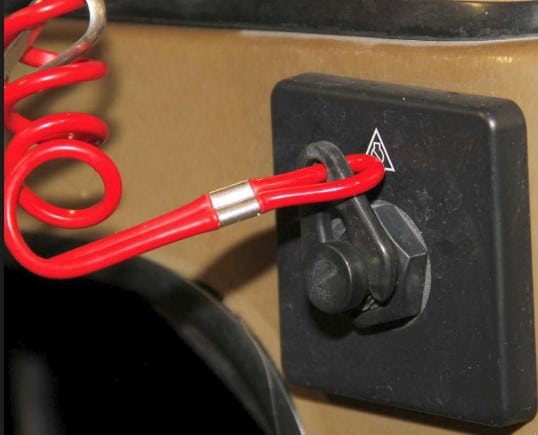
Forgetting to disengage the safety lanyard is another mistake many new boaters make. If the safety features are on, the boat will not start, which is good.
These days, most boats come with safety features that prevent the ignition from going on when engaged. This ensures that the boat doesn’t start running when you aren’t ready, which can be tragic if it happens.
Check that the safety lanyard is not engaged before you ruin your ignition trying to start it so many times. If it is, first disengages it, then restart the engine.
The lanyard should also be connected to the ignition switch. But, this safety feature sometimes comes loose, preventing the engine from going on. If the lanyard is lost, the engine may refuse to start, or it may only crank.
13. Boat is in gear
Before starting the boat, ensure that the gearshift is in neutral. The engine will not start if the gearshift is slightly off neutral. You might see the lights go on when you turn on the ignition, but if the boat is in gear, it will not go on despite all your efforts. Move the gearshift to the neutral position, and if there is no other problem, the engine should start.
14. Loose ignition points
Ignition points work more or less the same way as the spark plugs. The ignition points will prevent the boat engine from starting if they are bent, worn out, or misaligned.
Inspect your ignition points for dirt, damage, or misalignment. Clean out any grime and reposition the wires if they are misaligned. In kinked or damaged ignition points, replacing them is the best solution.
15. Dented choke linkage
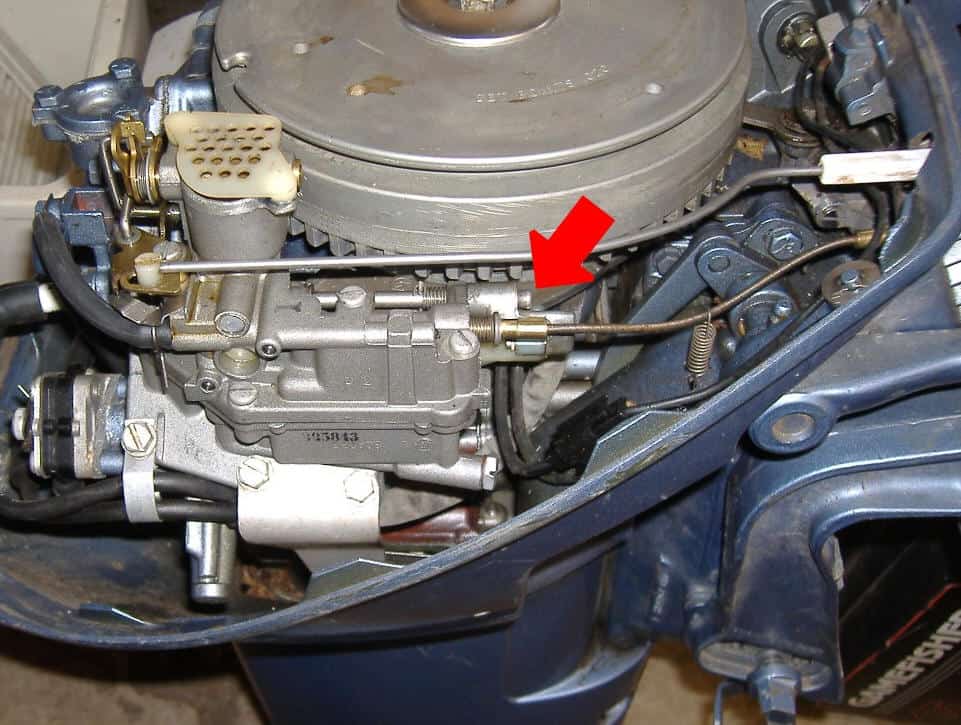
The choke linkage on the carburetor controls the flow of air to the engine cylinder, allowing the engine to attain optimal temperatures to vaporize and combust fuel. If the choke linkage is faulty, it might prevent the engine from starting.
In boats with a manual choke linkage, use a pair of pliers to readjust a kinked choke assembly. But if the linkage is damaged, you will need to readjust it. For an automatic choke, correct and readjust it back to position.
Summary: What To Do If Your Boat Engine won’t Start
Like any other mechanical item, your boat’s engine comprises many parts that work together to keep your boat running. Surprisingly, even the smallest damage or misalignment of any parts can stall the engine.
If your boat engine doesn’t start, I recommend first checking the immediate issues such as the fuel tank, gearshift, ignition sequence, and the battery to ensure no problems here.
If all is well and your engine still won’t start, you can take your troubleshooting further to identify the culprit. I hope this guide will help you quickly find out what to do when your boat engine doesn’t start.
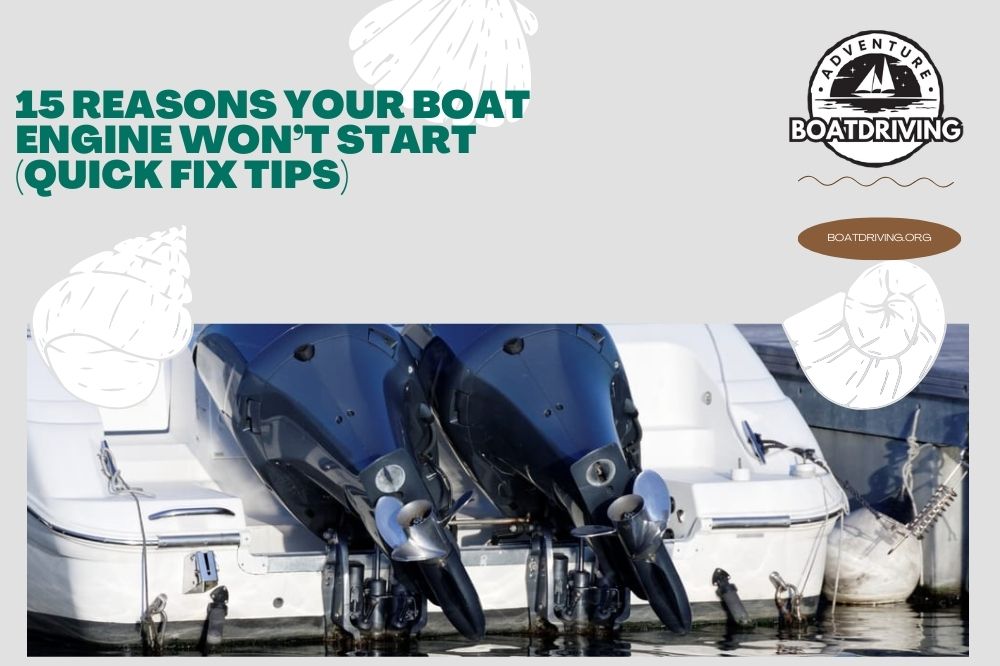
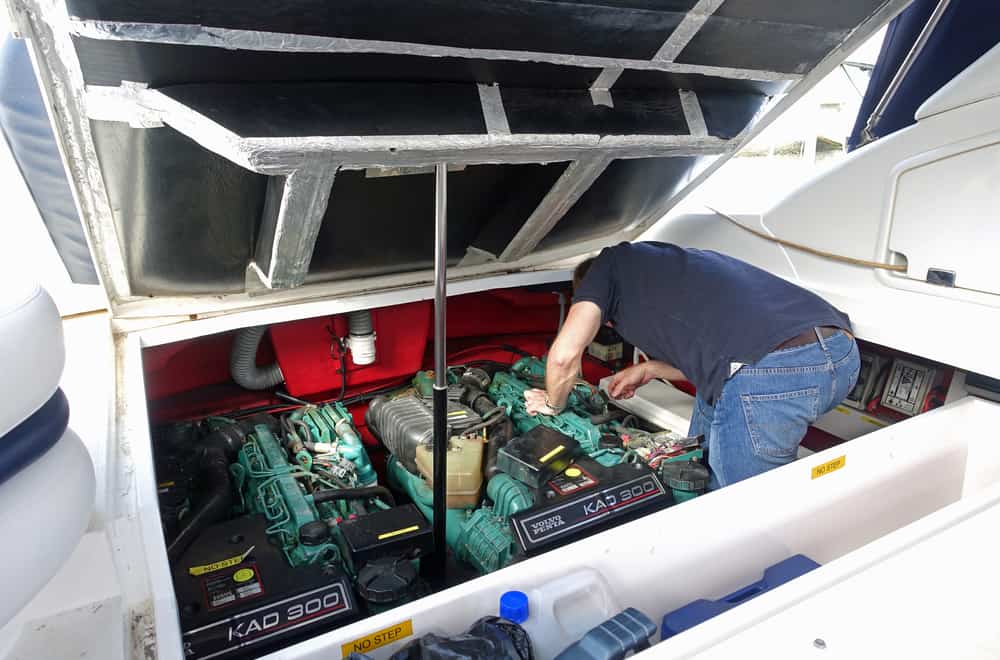
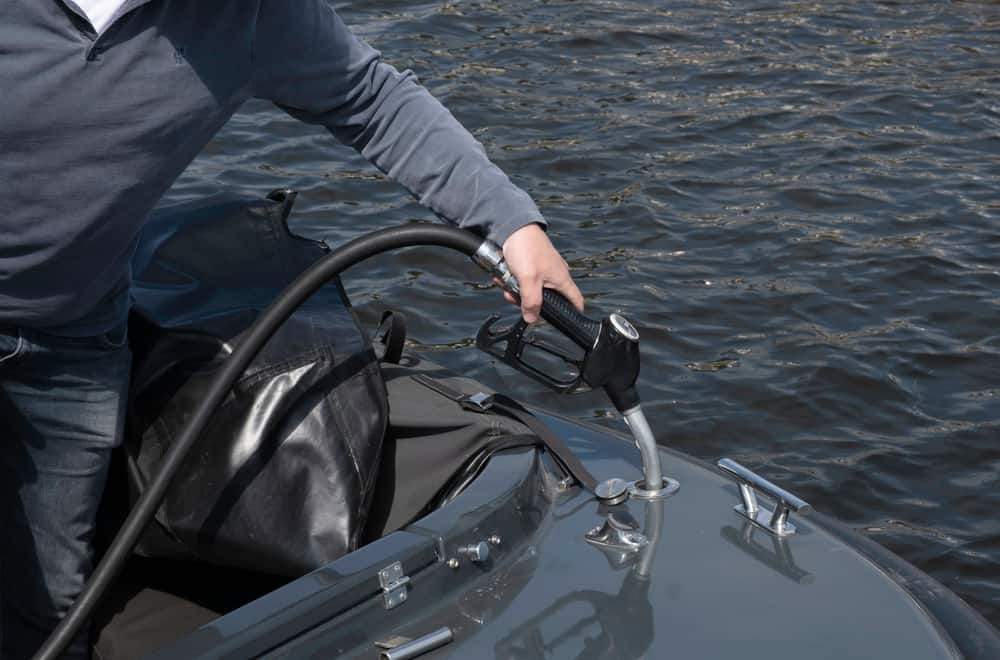
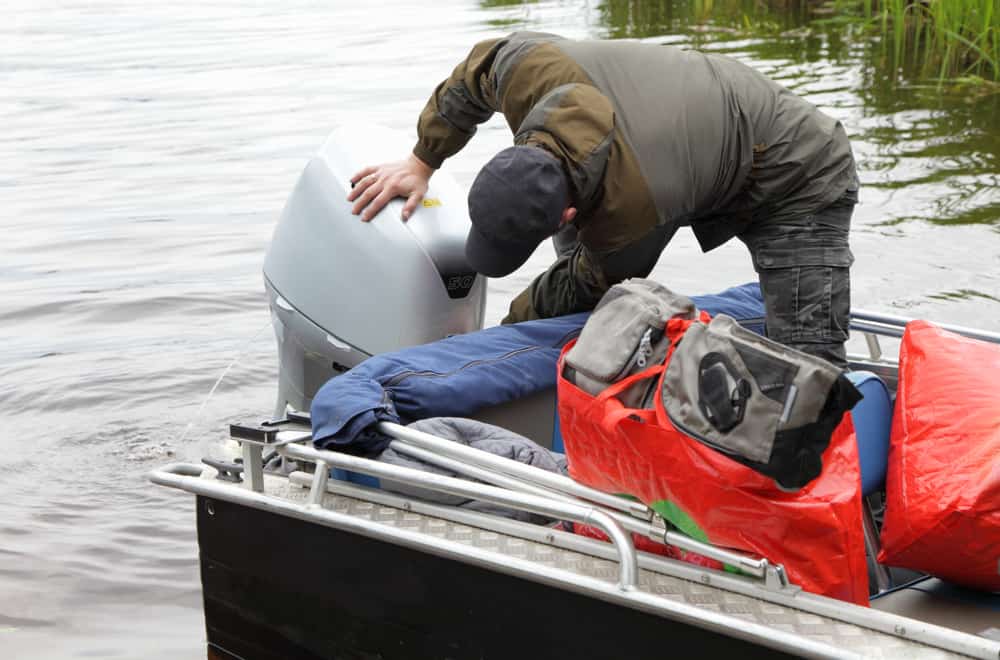
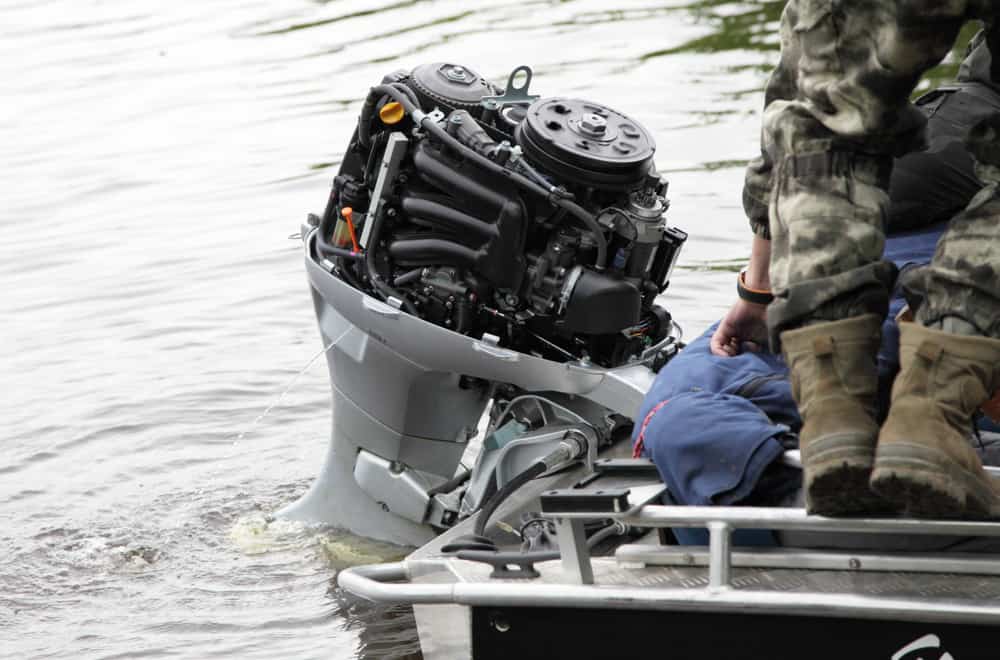
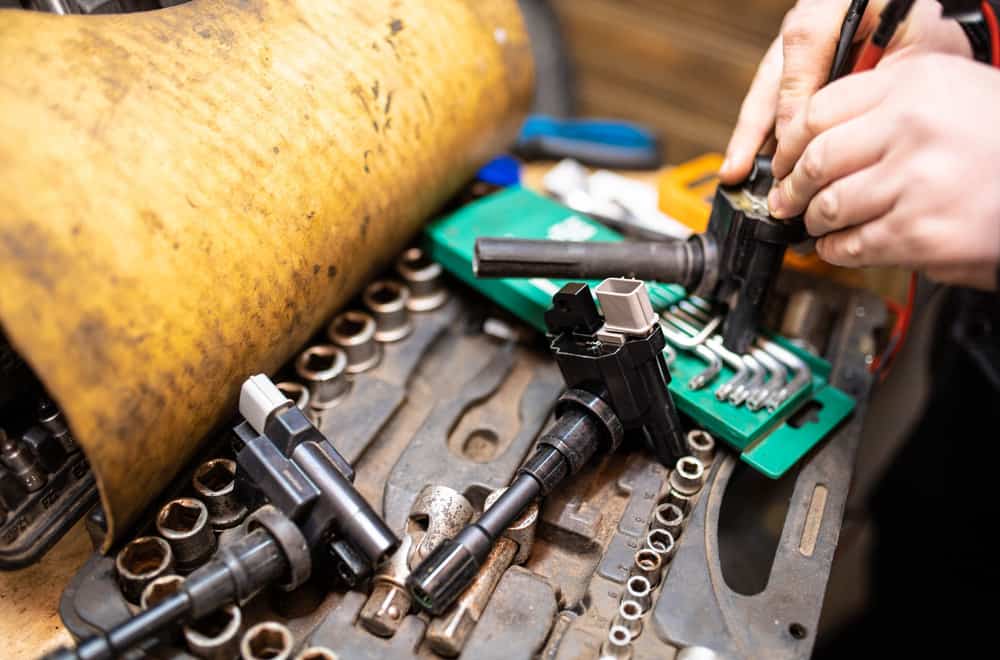
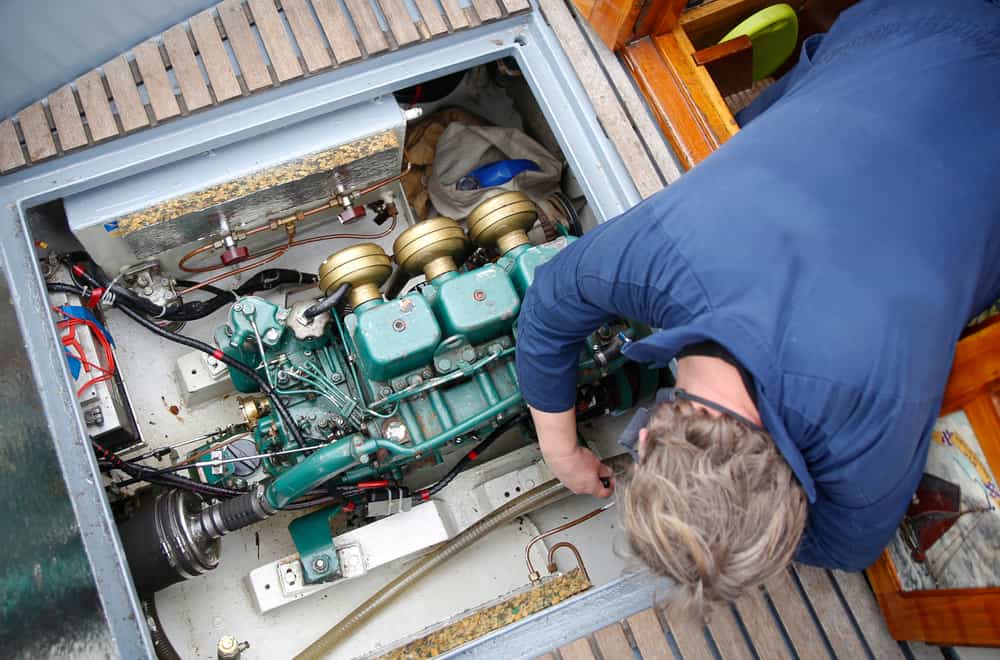
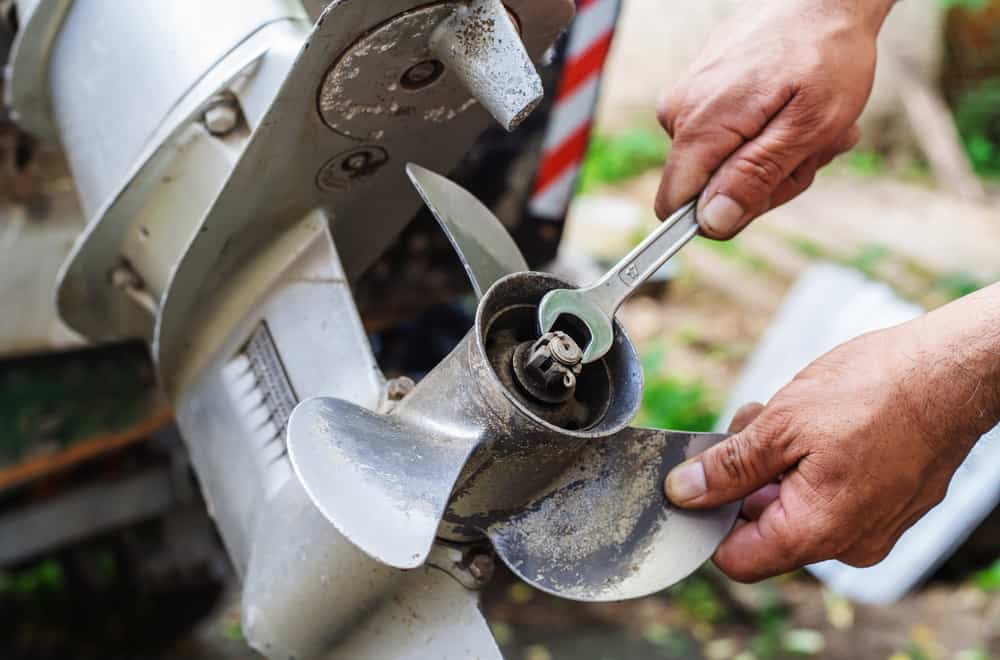
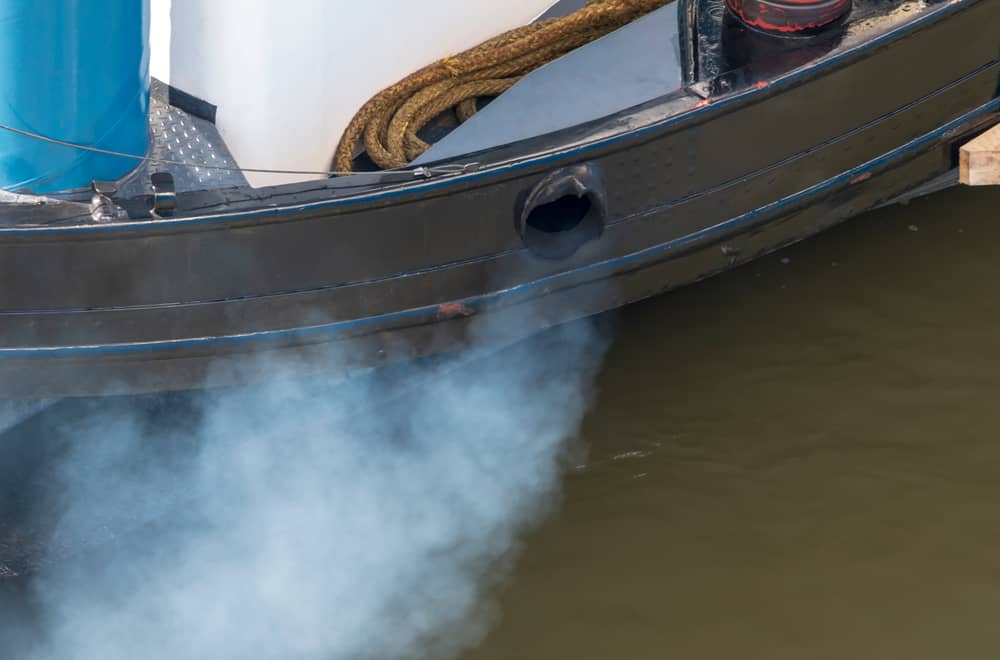
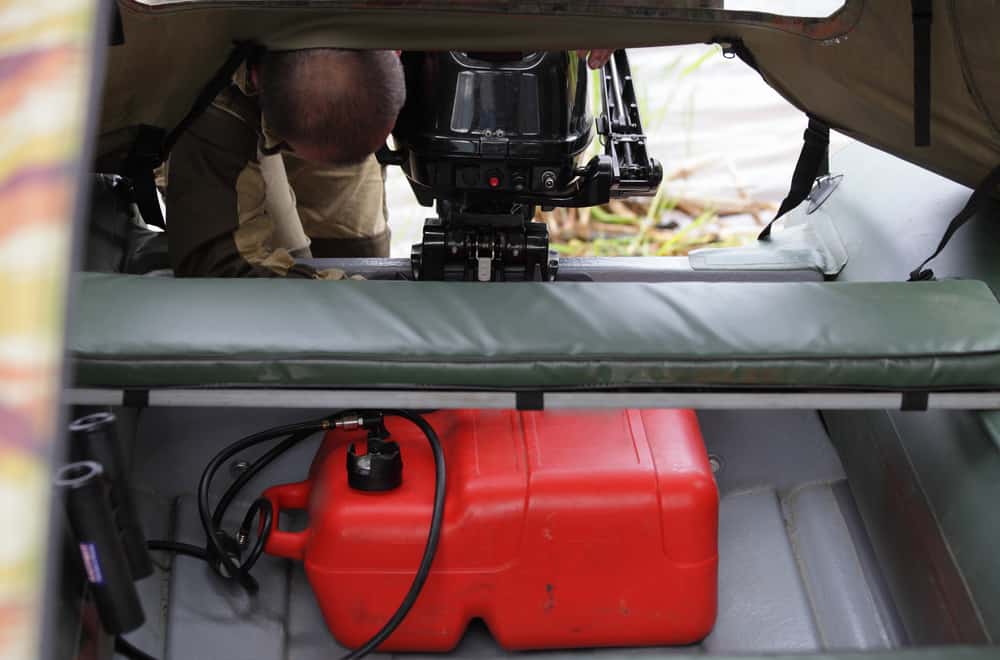
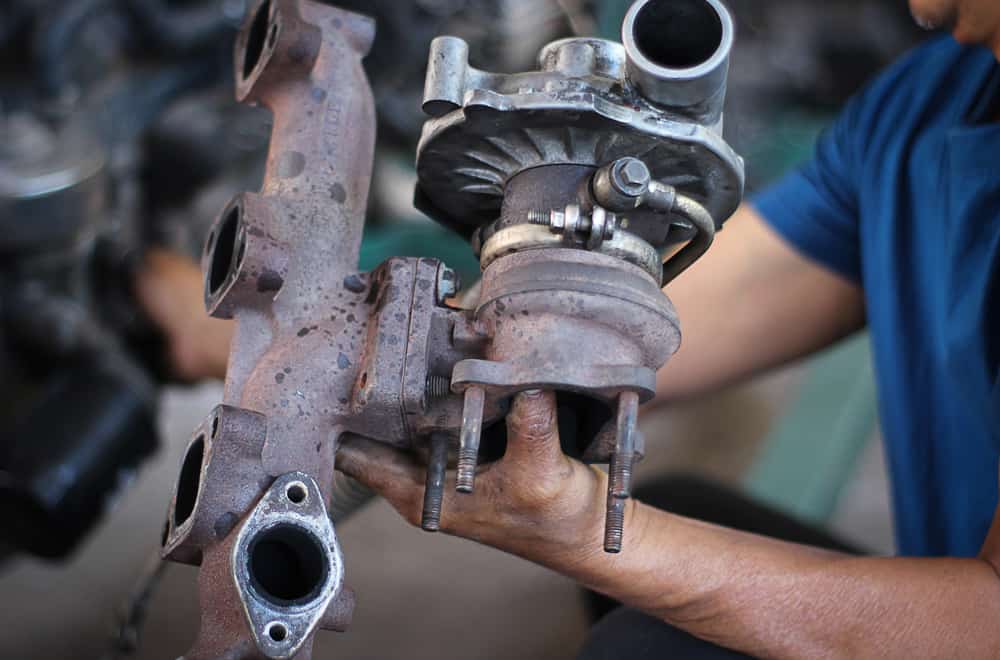
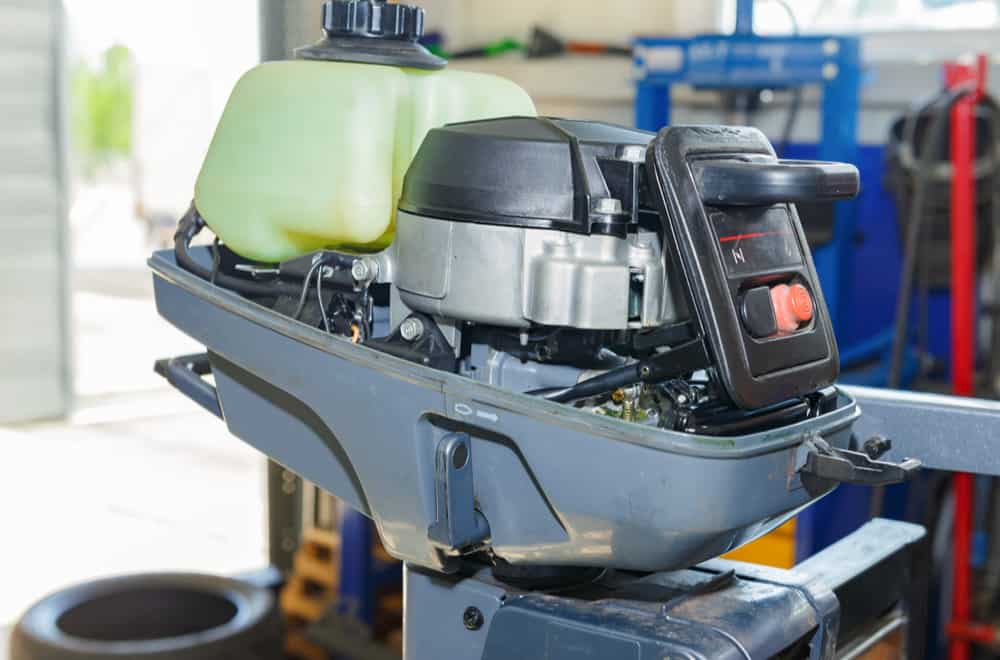
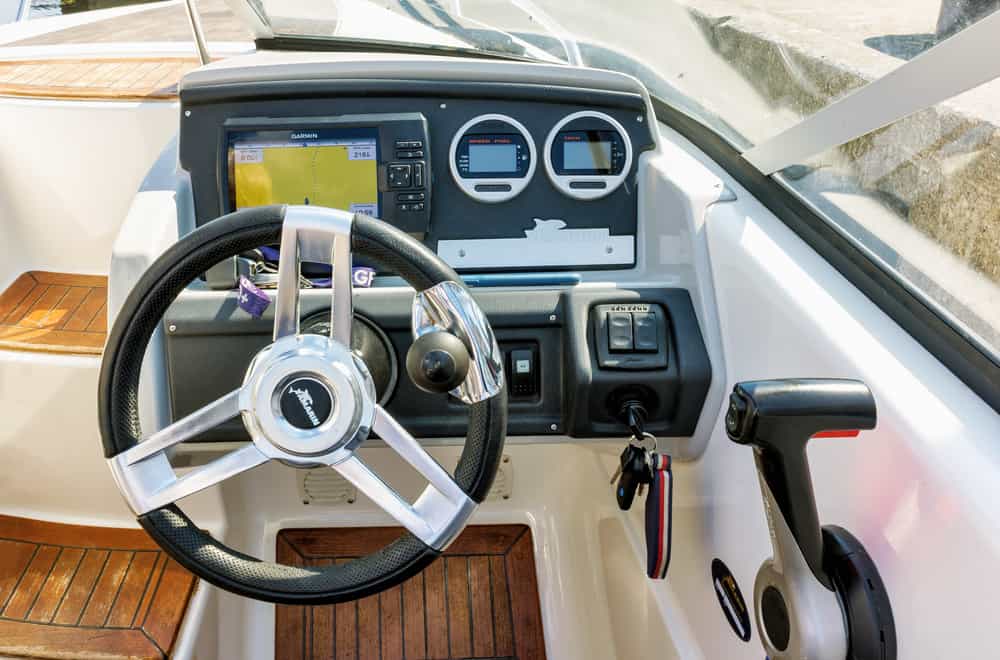
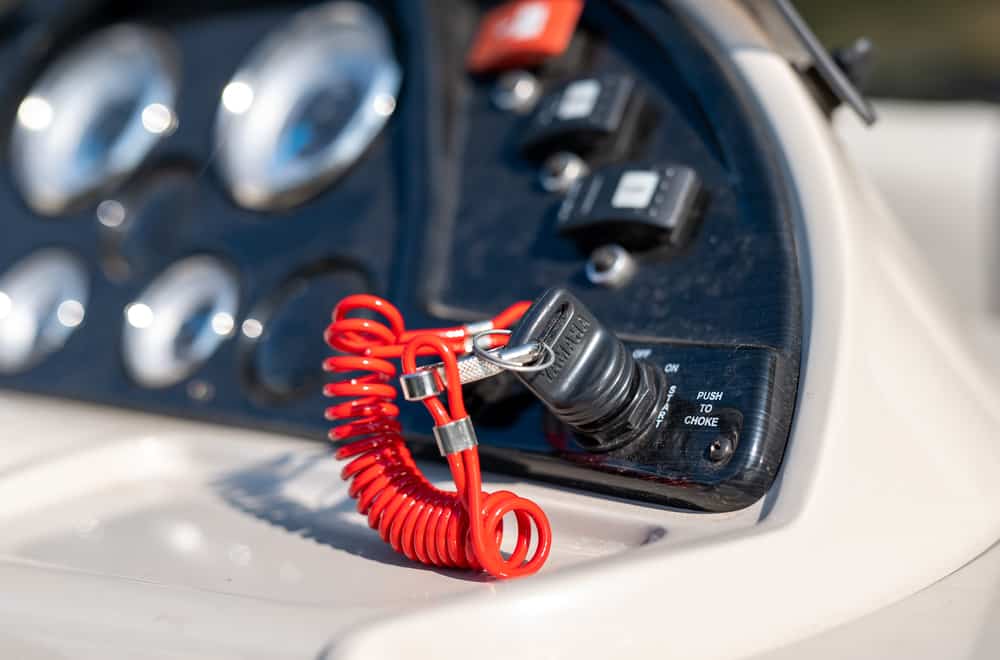
ha just after a little advice well i have just purchased a nice little half cabin but can’t seem to get it to start like when you turn the key it makes a noise but won’t actually crank the motor well the person i brought it of said it was running perfectly then he ankered down and done some fishing then when he started the motor again he said it was lagging but still running then he stopped again to do some more fishing then started it up and same thing it was lagging so finally he pulled over one last time done some more fishing then was going to go home but this time the motor wouldn’t start at all any help anyone can give would be muchly appreciated